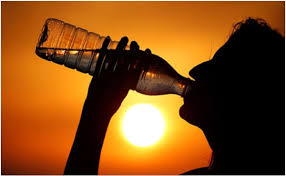Wet Bulb Temperature:

India is currently dealing with a very hot spell that is hurting many states, such as Delhi, Uttar Pradesh, Punjab, and Rajasthan. The combination of high temperatures and high humidity is having a big effect on daily life.
- Finding out how uncomfortable it is during a heatwave depends on how much humidity there is.
- Three types of temperatures are used to figure it out: dry bulb, wet bulb, and dew point.
- The way each one measures humidity is as follows:
- Temperature of the dry bulb – This is the average temperature of the air as measured by a monitor that has not been wet.
- Temperature of the wet bulb –This measures the coolest air that can get by evaporating water at a steady pressure. For measurement, a damp cloth is put around the thermometer bulb. Since evaporation cools the bulb, the number on the thermometer goes down. The wet bulb temperature is important for measuring humidity because it shows how much water the air can hold and helps us understand how evapotranspiration affects plants and people’s comfort.
- Temperature at the dew point – This tells you the temperature at which the air is completely saturated (100% humidity) and water vapor starts to turn into dew.
- Significance of Wet Bulb Temperature:
-
- Higher humidity lowers the cooling effect of evaporation because wet air stops more evaporation.
- So, if the temperatures of the wet bulb and the dry bulb are close to each other, it means that there is a lot of humidity.
- It’s more uncomfortable in hot weather when the difference is small.




